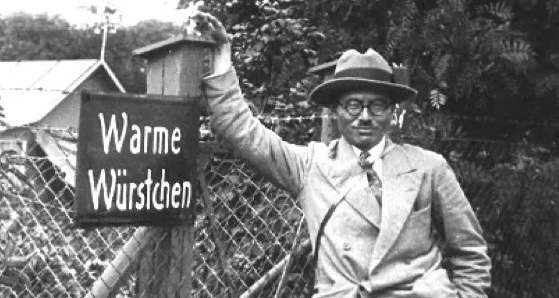SYP Tokyo 2017 | Lecture about the history of public space in Japan and how it was used and shaped by artists.
Public Space as Education :: Western painting methods were introduced in Japan as early as the sixteenth century, but the cultural framework of Western art was suppressed until the late nineteenth century.
Representative space :: The first museum in Japan was modelled on the British South Kensington museum, and opened at the former site of the Kaneiji temple main hall in 1882 in the presence of Emperor Meiji.
Representative space :: The first museum in Japan was modelled on the British South Kensington museum, and opened at the former site of the Kaneiji temple main hall in 1882 in the presence of Emperor Meiji.
New perspective :: Set up 1890 in the Asakusa amusement district the first permanent public display of Western art was a panorama painting depicting a battle from the Boshin Civil War by Yata Issho.
Public Space as an Economy :: Following the economic upswing of the RussoJapanese War of 19041905 and World War I, department stores boomed and rapidly extended their consumer base.
Art & Economic space :: The department stores became the successor of the entertainment districts.
Performance Space :: Murayama Tomoyoshi, returned from Berlin in the year 1923 were he worked with the main characters of the Dada movement.
Public Space :: The Great Kanto Earthquake was a turning point in Japanese society. Despite all the damage and lifeloss it caused, the disaster was a urban renewal.
Public Space as Research :: The public space which emerged within this new culture, shared by all but differentiated by class and gender, expanded the metropolitan areas.
Commercial Space :: A main part of their research was advertising and in addition to its economic function, its importance as an interior of the street.
Modern Space :: One main conclusion of this research was that modern life produced different sort of people who were dedicated to the new style.
Public Control :: On the Fifteenth of March 1928 there was a draconian roundup of socialists and communists with the mass arrests of over 1,600 suspects, by the Home Ministry’s Special Higher Police Tokko.
